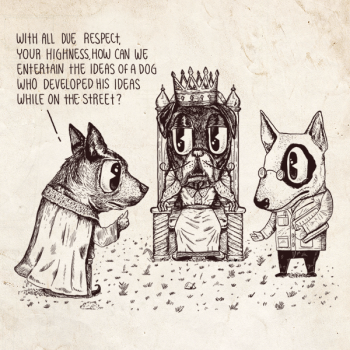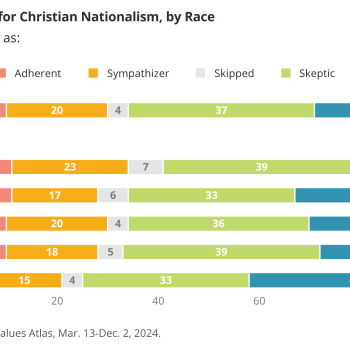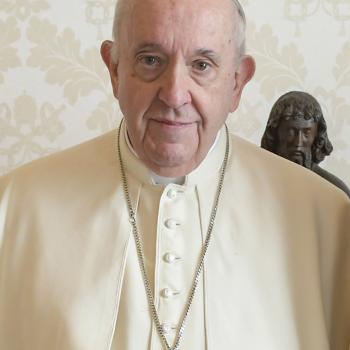Guest post from Miles S. Mullin II, Southwestern Baptist Theological Seminary’s J. Dalton Havard School for Theological Studies:
John Fea’s recent Anxious Bench post, “Where Are the Studies of Twentieth-Century Black Evangelicalism?” raised an excellent question, one that confronted me over a decade ago as a graduate student in Dennis Dickerson’s Religion and the Civil Rights seminar. At that time, works on twentieth-century African American religious history and the “black church” were readily available. Works on twentieth-century American evangelicalism could also be obtained easily. But rarely did the former employ the term evangelical or the latter include anything of note regarding African Americans.
Recently some religious historians have redressed some aspects of this lacuna in the scholarship. Building upon the historiographical approach developed by the first wave of historians of Southern religion such as Sam Hill and Donald Mathews, they have considered race as a primary interpretive lens for understanding evangelical history. Since cultural constructions of race shaped the religious beliefs and social interactions of American evangelicals, this line of historical inquiry proved fruitful. Books such as Stephen Miller’s Billy Graham and the Rise of the Republican South have enriched our understanding of evangelicalism. Even so, such efforts deal with questions of race in terms of how they affected a predominantly white evangelicalism.
Which brings the discussion back to the question at hand: where are the studies of twentieth-century black evangelicalism? Two historical realities have contributed to the paucity of works on twentieth-century African American evangelicalism. The first relates to the history of evangelicalism as a movement. The second relates to the manner in which the struggle for full equality emerged as the centerpiece of African American history in the twentieth century.
As the Civil Rights struggle began to take shape after World War II, a “new evangelicalism” also emerged. By the end of the twentieth century, this irenic, cooperative, and culturally engaged born-again Christianity gradually displaced the separatist fundamentalism of a prior era as the dominant form of evangelicalism. Organizationally, it expressed itself in the National Association of Evangelicals (NAE), founded in 1943. Like most “new evangelical” ventures, the NAE intentionally maintained broad doctrinal standards, hopeful that all conversion-oriented Protestants would join the organization.
To a great extent, this approach worked, as Pentecostals, regional ethnic denominations, and other groups heretofore situated outside evangelical efforts connected with the new evangelical impulse. The leadership of the NAE expected that many African American groups would do the same. Early applications for membership even included a box to check if one’s group was a “Negro” denomination. Somehow, they expected African Americans to ignore the issue of race and unite with the predominantly white NAE based on core doctrinal agreement, an approach that smacked of the sort of paternalistic efforts that characterized white Protestants in their dealings with African Americans since the Civil War. As a result, few African Americans joined the NAE either as individuals or groups while many segregationists fit comfortably within its ranks. Further, the NAE’s leadership actively courted the SBC, a denomination whose grassroots support of segregation at mid-century is well-documented. In later years, as the NAE persistently avoided racial issues in order to avoid alienating the segregationist elements of its membership, the few African Americans that had joined left to form the National Black (née Negro) Evangelical Association in 1963.
The second historical issue relates to the prominence of race as a defining category in twentieth-century America. While whites could ignore the issue of race if they chose, blacks were not afforded such luxury. Whatever their doctrinal commitments, American society primarily identified them by the color of their skin. While whites might choose Methodist, Baptist, Presbyterian or even “evangelical” as their primary identity, African Americans had “black” chosen for them.
In the twentieth century, African American leaders recognized that a successful struggle towards full equality depended upon solidarity, and they turned the racial identity hoisted upon them by others to their own purposes. As they struggled towards full equality, they embraced race vis-à-vis any denominational or pan-denominational (e.g. evangelicalism) as their primary self-identity. Early in the century, works written or edited by black intellectuals set the trajectory for this reality. Volumes by W.E.B. DuBois (The Negro Church, 1903), G. Carter Woodson (The History of the Negro Church, 1921), and Benjamin E. Mays and Joseph Nicholson (The Negro’s Church, 1933) demonstrate the manner in which doctrinal differences were subsumed by racial solidarity. Organizers and activists of a later generation followed in the same mold. Thus, Orthodox Presbyterian Minister C. Herbert Oliver, theologically progressive Baptist minister Martin Luther King, Jr., and atheist A. Philip Randolph all made common cause in the freedom struggle for African American equality.
These historical developments in the twentieth century shaped the historiography of both African American religious history and evangelical history of the late twentieth century in two important ways. First, racial solidarity became the dominant historiographical lens through which African American religious history was assessed. For instance, despite the fact that groups such the Nation of Islam (NOI) and the Southern Christian Leadership Conference (SCLC) differed in practice, religious commitment, and goals, the hegemony of race as an interpretive paradigm led many historians to synthesize and find continuity between the groups. Both Gayraud S. Wilmore’s acclaimed Black Religion and Black Radicalism and Baer and Singer’s useful African-American Religion in the Twentieth Century: Varieties of Protest and Accommodation serve as examples of this approach. Religious particularities were subsumed under rubrics such as the “black church.” Second, historians told the history of twentieth-century American evangelicalism largely without reference to African Americans. For example, one would be hard-pressed to find references to race or African Americans in the histories produced by Timothy Weber, George Marsden, Joel Carpenter, D.G. Hart and others in the 1970s, 1980s, and 1990s. As evangelical historians spilled much ink over the issue of evangelical identity in the 1980s and 1990s, they largely ignored race as an important element of that question. Thus, history and historiography excluded African Americans from the twentieth-century evangelical narrative, just as it excluded any meaningful implementation of evangelical as a religious category from twentieth-century African American history. As a result, there is a paucity of works on African American evangelicalism qua evangelicalism.
For all its foibles, the racial reconciliation movement of the last few decades demonstrates that there is something that draws evangelicals together across racial lines, and recent historical works give hope that things are trending in a different direction historiographically. For example, A.G. Miller (Oberlin College) has written on Fundamentalist African American Bible Schools and studies of black Pentecostalism have proliferated, while historians of evangelicalism have intentionally embraced race as a category of analysis. (Mark Noll’s American Evangelical Christianity and God and Race in American Politics are good examples.) Hopefully, additional works of this sort will continue to emerge, eventually leading to a general work on black evangelicalism in the twentieth century. If it does, I suspect we will learn some things about evangelicalism—black and white—that we did not know before.












